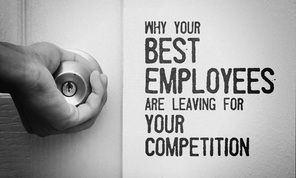
A few months back, I introduced a topic that is ‘hot’ in the current HR dialogue: the need to futureproof your workforce for the digital age, and in particular, the need to upskill staff.
Over the coming weeks, we’ll be diving deep into upskilling for the future, the barriers businesses currently face, and what Ireland’s organisations, large and small, need to be focusing on in the short and long term if they are to succeed in the future digital age.
Digital Transformation: What Exactly Is It?
One of those phrases that sounds informative yet says very little, it can be easily summed up as a process of digitising all methods and applications for working within a business. From placing all systems onto a cloud, to swapping out the monitors for laptops which enables remote working, and everything in between.
While it can be said that many businesses throughout Ireland have certainly started on a path of Digital Transformation, by no means has this been successful. Rather, the very thing that it is meant to be helping is the same thing hindering its success – people.
People – The Failure of Digital Transformation
Technology, no matter what it is, can only be as good, as helpful, as effective, as the people using it. In 2020, Ireland’s workforce is bigger in demographics than ever before, with more generations than ever before working alongside each other. With different age comes different experiences, different abilities and different attitudes to this ever growing digital revolution in Ireland’s workplaces.
Many Irish businesses have plugged their resources into providing the latest technology to their workforce in an attempt to keep them engaged and to keep the organisation ahead of competitors. But what is the use of this tech if no one knows how exactly how to use it? Have any businesses actually asked their workers if they are comfortable with this introduction?
Failure to consult workers has most likely resulted in poor attitudes towards this technological drive, regardless of age. Instead of making jobs easier and work more efficient, the view in your organisation may incline towards technology as a hindrance and as a threat to work as we know it.
But What Can You Do to Reverse These Attitudes?
As the saying goes, often it can be a case of ‘What is done is done’. By introducing a rapid flurry of new technology without instruction or explanation, your workforce may feel that their jobs are at risk or may feel overwhelmed by the pressure of ensuring that they can use this tech efficiently. Not only could this impact your talent retention or workforce morale, but it puts your business at high risk of a cyber security breach. What if something that is meant to be secured within a cloud is shared to the public by a staff member? Or a staff member uploads content that could harm your hardware?
Do not threat – get your Digital Transformation on course for success and avoiding failure via human error with these simple steps:
- Communicate from The Inside Out
But internal communications should come first – your staff should come first. Futureproofing your workforce can only be successful if you communicate all changes with said workforce appropriately. Whether this is through simple explanation via email, group workshops or 1-to-1's, however appropriate, elevate your HR team and communicate with all staff at all levels, and at all points of your Digital Transformation.
This will help to reduce staff fears and improve attitudes to technological change. Thorough explanation will provide context to staff and help to increase understanding, keeping staff onside and morale high.
- Show Some TLC – Train, Learn, Commit
If you introduce a new programme, a new method or working or new equipment – train your staff! A futureproofed workforce will only gain success if they know what they are doing and why. Provide in depth training to ensure all workers can use new technology efficiently. This will highlight your commitment to their learning and development and guarantee that this new technology is used correctly for its intended purposes – to develop your business, improve efficiency, increase productivity and provide staff, not machines, new opportunities.
- Give A Little, Get A Lot
Ensure you have the necessary resources in terms of money, time and staffing to ensure that all workers are constantly refreshed on any new programmes, applications or wider technology within the workplace.
Host regular workshops to facilitate staff discussion on the effectiveness of new tech developments – this gives you an opportunity to get real feedback from the foundations upwards on what digital solutions are working and what is not. This will also give management and HR the opportunity to assess whether your people are using technology appropriately and whether there is any risk of more ‘human error’ occurring.
By consistently giving a little, onboarding your workers into a digitised, futureproofed organisation will and give a lot in the long term.










 RSS Feed
RSS Feed